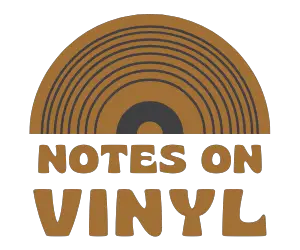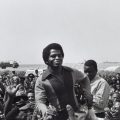Are you looking to, once and for all, get the inside scoop on just how much it costs to press a record? Are you the head of an independent label that is sick to death of letting bigger labels trample all over you when it comes to negotiations at the pressing plant? Are you simply an independent artist who wants to put out their first release on hot wax?
Then you are in the right place, for today we will be exploring just how much does a vinyl cost in this day and age, where prices out of the packaging have sky rocketed and only seem to be gaining altitude.
Table of Contents
- How Much Do Vinyl Records Cost
- Factors That Affect the Cost of Vinyl Records
- The Process of Making Vinyl Records Constructs Their Value
- Final Tones
- FAQs How Much Does a Vinyl Cost
How Much Do Vinyl Records Cost
The cost of vinyl records can vary widely based on several factors, including the rarity of the record, its condition, whether it is new or used, the artist, and the album itself. Here’s a general breakdown to give you an idea:
New Releases and Reissues
Prices for new vinyl records and reissues of classic albums typically range from $20 to $40. Limited editions, colored vinyl, and special pressings may cost more.
Used Records
The price of used vinyl can vary greatly. Common records in good condition might be found for as little as $1 to $5 at thrift stores or garage sales. However, prices at record stores or online can range from $5 to $20 for used records, depending on their condition and demand.
Collectibles and Rare Pressings
Rare records, first pressings, and collectible items can command much higher prices, ranging from hundreds to thousands of dollars. The price is determined by the record’s rarity, condition, and the market demand for that particular pressing or artist.
Budget and Bargain Finds
It’s also possible to find budget records and bargain deals, especially for common titles or at clearance sales, where records might be available for under $10.
Box Sets and Special Editions
Box sets and special editions, which may include additional materials like booklets, posters, and multiple records, can range from $50 to several hundred dollars, depending on the content and packaging.
Factors That Affect the Cost of Vinyl Records
Worth noting are the various factors that can come together to ultimately affect the cost of a record, no matter its final presentation.
Quantity
Clearly, the amount of records that are to be pressed will have a bearing on the overall cost of a record.
This is usually most important for a label, however, though it is worth noting how exponential the accumulation of cost is: if you look at the table below, you will notice that the price of initiating a single pressing ($190) is the same as doing so for a pressing of 100.
This base cost being the same means that it would, in all, be cheaper and more cost-effective to press more in one batch.
Weight
Though ever a popular debate within the kinds of communities of audiophiles that are willing to debase themselves over such things, there is a steadily increasing trend among labels and pressing plants to press records onto wax of 180 grams, purportedly so that that record lasts longer.
It seems, however, to be more about increasing the number of people willing to pay the $20 or so that a record typically costs when hot off the press.
Not everyone is sold on the new vinyl boom, so limited editions of new and old records in 180 gram vinyl are necessary to seal the deal. These releases tend to be lathered with stickers that proclaim the wonder of this new fandangled thing, as an idyll to be upheld at all costs.

Length
It does not take a rocket scientist to realize that a longer record is going to cost more, not only to produce but also to purchase. The longer the original release, the more sides it will likely have to be pressed onto. This will mean more stages of the process, accruing more costs along the way than simply the hot polyvinyl chloride involved in manufacturing.
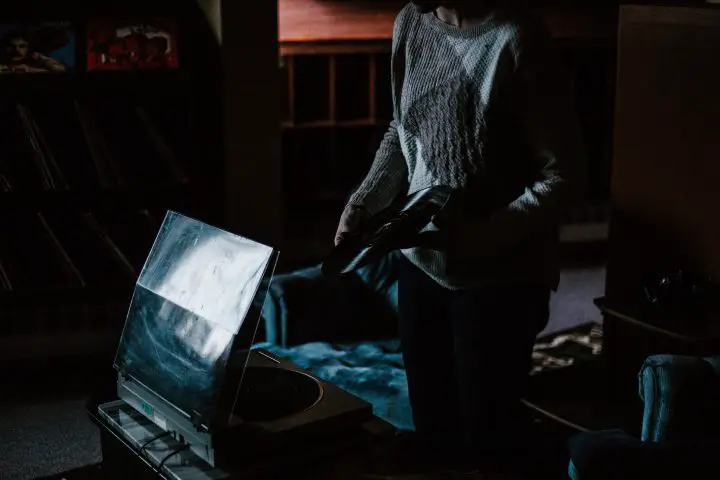
The electroplating process through which the master discs are created is one of the more expensive parts of the process, and so to multiply the amount of times that it needs to be done by at least two times.
A release like, say, Lift Your Skinny Fists Like Antennas to Heaven by Godspeed You! Black Emperor still costs a bunch to purchase, despite the fact that it came out in the very early 00s, though I do not doubt that its legendary status within the post rock genre has something to do with that.
Color
It ought to be common sense at this point that colored vinyl is inherently going to cost more than a regular vinyl, a blue vinyl more than a black vinyl, even despite the fact that polyvinyl chloride is naturally clear.
The former will cost more for being a more specialized offering, requiring specific colors, dyes, and materials to be sourced for the job.
This is especially problematic if the record is seeking to match the color on the record sleeve, as has become an increasing trend in recent years.
I once picked up a copy of In a Silent Way by Miles Davis whose record perfectly matched the deep midnight blue of the cover photo, and I do not doubt that it cost a fair amount more to so perfectly pair the colors on the record and the sleeve.
Design
Just as the coloring of the record itself can affect the overall cost of the production of a record, the sleeve itself can also have an effect. Granted, this effect will be less noticeable than that on the color of the record, but still it will be there.
Some colors are more difficult to reproduce than others, and even some materials are more costly to recreate than others.
I once, for example, bought a copy of Depression Cherry by Beach House which was at least a buck or two more than some of the other records in the record store I was in. And I know that I have the deep wine red sleeve to thank for that, for it is not just made from hard card but is also textured like felt, to feel like a plush and hypnogogic pool table in an oneiric mansion’s bathroom.

The Process of Making Vinyl Records Constructs Their Value
In order to properly understand the pricing of vinyl records, we must understand precisely the process through which they are constructed, lest we forget the fine details of vinyl record sales within the vinyl industry.
| Part of the Process | Average Cost | Cost per 100 records |
| Cutting of Lacquer per side | $190 | $380 |
| Electroplating per side | $170 | $340 |
| Center labels per side | $0.05 | $5 |
| Inner sleeve | $0.15 | $15 |
| Jacket | $0.75 | $75 |
| Initiating Pressing | $190 | $190 |
| Test Pressing (of 5) | $65 | $65 |
| 140g black vinyl record disc | $1.55 | $155 |
| Total for 100 | $1225 |
Step 1
First, before they become vinyl albums, the music on the release is mastered specifically for vinyl pressing. A considerable amount of the vinyl record cost will be chalked up to the hiring of a specific mastering engineer for the job.
Keen record collectors who have sought knowledge about the wonderful minutiae of their record collection will know that vinyl is a trying format, mesmerizing in the myriad ways that it can hinder progress.
New records will almost never be ready for new vinyl right off the bat, and must be mixed and mastered according to the limitations on volume and dynamics that the vinyl format breeds.
Step 2
Once the sounds on the release are ready and the sound quality is adequate enough – and before local record stores can their grubby little fingers on it- it will be sent off for the creation of what is referred to in the music industry as a master disc.
This is essentially an aluminum plate that is coated in a layer of lacquer, the base disc from which all the other discs will eventually be printed.
The mastered audio is sent through a cutting lathe – in essence, a turntable cartridge replacement – which scrapes into the surface of a blank disc all of the valuable vibrational data that a cartridge will eventually absorb, and which a local record shop will vend, even if alongside a digital download.
Step 3
From this master disc, more discs are made, the subsequent being referred to as the metal stamper disc.
This is made by spraying the master disc with silver and submerging it in a bath of nickel, after which it is electroplated so that the nickel will fill in the lathed grooves and thus create a mold of the record in question.
Two discs are then left behind which should be mirror images of each other. The new father disc is called upon to stamp its impression into the hot polyvinyl chloride wax, which is what are vinyl records made of.
Quality assessment occurs at precisely this stage, with the master disc being checked for errors. The father disc and its impression are thus electroplated once more to provide a disc that can actually be listened to beside the digital masters.
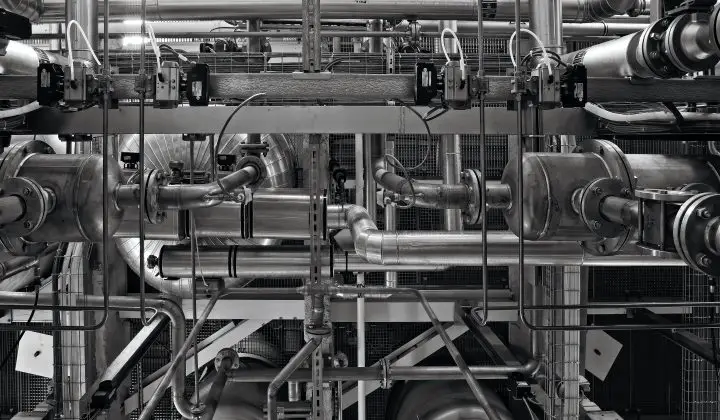
Step 4
And at that, the pressing begins, though all of the aforementioned is deeply ingrained in the production cost and the eventual vinyl prices’ final cost.
Pellets of polyvinyl chloride are pressed into what are commonly referred to as biscuits – blobs of vinyl that look like hockey pucks, and which are thus easier to press into the disc shape.
The stamper discs for each side of the album are loaded below and above the biscuit. With pressure and heat they are pressed inward to impress their form onto the vinyl.
The printed color label is also pressed onto the record simultaneously, technicians having made sure to bake the labels beforehand so that there is no moisture in them that might cause them to bubble when pressed onto the record.
Step 5
One last test pressing is made before the records head out to their listening public.
The artist, producer, mastering engineer, and record label are among those who will be given a copy to listen to and critique, to make sure that the resulting record is as close to the artist and producer’s original intention as possible, and that it also corresponds to the hopes and standards of the record label in question.
An artist might, for example, be fond of the way that the pressing process might have done a disservice to the audio fidelity, whereas the label and producer and engineer might find records done dirty like this to be unacceptable.
When everyone is close enough to some semblance of happiness with the finished product, then it is sent forth, newly minted and shrink wrapped in thin plastic. Then you come in, taking this standard format and turning it into some of your favorite records.
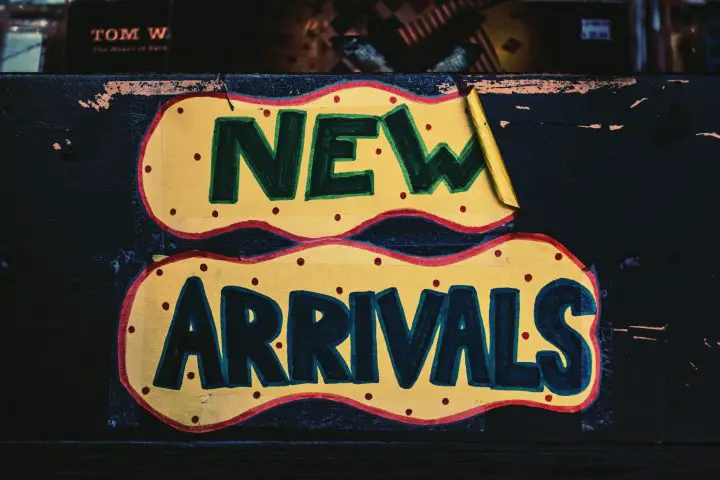
Final Tones
So, there you have it! Hopefully, your wonder and curiosity about the total cost of pressing prices in this year of our lord 2024 has been satiated, and you are now feeling somewhat wiser about the topic, able to take your newfound knowledge out into the world.
Remember all of these minutiae when you are next berating the vinyl format; recall how much time and effort goes into each individual release, and how much time and effort has gone into it over the years to perfect this process to the point where you do not even have to think about it.
FAQs How Much Does a Vinyl Cost
What is the average price of a vinyl?
Though this depends on the release in question, most new releases tend to sell for at least $20, though often more (at least upon first release). If this is a double album, then you can expect this price to increase to at least $30, much as a double LP compilation record by, say, Soul Jazz Records. The average vinyl record in 2007 would cost around $5, so this new price either says a whole lot about the rise of inflation and / or the new cultural weight bestowed upon records, where the purchasing of records comes to represent a token towards the artist instead of streaming.
How much does an original vinyl cost?
This very much depends on when it was released. If it is an original vinyl record in the sense that it is an original pressing as released in days gone by, several decades ago and the like, then it will likely cost a fair bit to purchase now (depending on the desirability of the release). If one is looking for the original price of the record as it would have been purchased upon its original release, then a dedicated search tool might be of use. A vinyl as originally released in this day and age comes at around $20 or more.
Are vinyls expensive?
This depends on your viewpoint. Some, for example, might see the $20 or more that vinyl records cost brand new nowadays as being simply too steep a price to pay simply to listen to a release that will not only sound antiquated and less defined but which is encumbered by various physical defects. The inverse perspective is one of adoration, where a music fan appreciates what the record can do to give back to a music industry and an artistic enterprise that has been subject to decay as wrought by streaming services. Your move.
How much does a vinyl pressing cost?
This will depend on the amount of records that are being pressed in the first place. This is usually most important for a label, however, though its worth noting how exponential the accumulation of cost is: if you look at the table below you will notice that the price of initiating a single pressing ($190) is the same as doing so for a pressing of 100. This base cost being the same means that it would in all be cheaper and more cost effective to press more in one batch, for the label and for the consumer.
Is vinyl worth the cost?
This is very much up for debate and seems to be a point of contention that will not easily be quelled. Some, for example, might see the $20 or more that vinyl records cost brand new nowadays as being simply too steep a price to pay simply to listen to a release that will not only sound antiquated and less defined but which is encumbered by various physical defects. The inverse perspective is one of adoration, where a music fan appreciates what the record can do to give back to a music industry and an artistic enterprise that has been subject to decay as wrought by streaming services.
